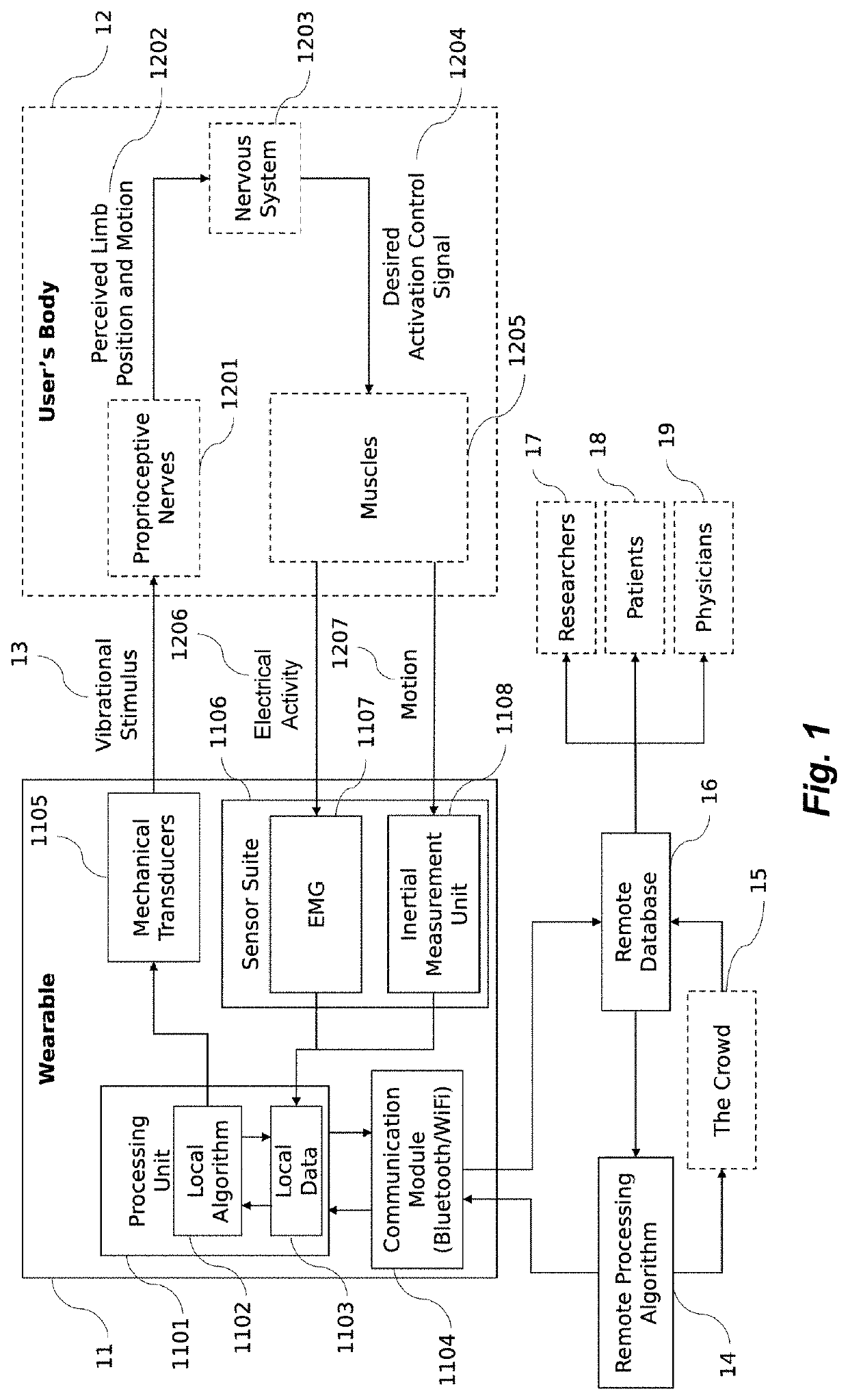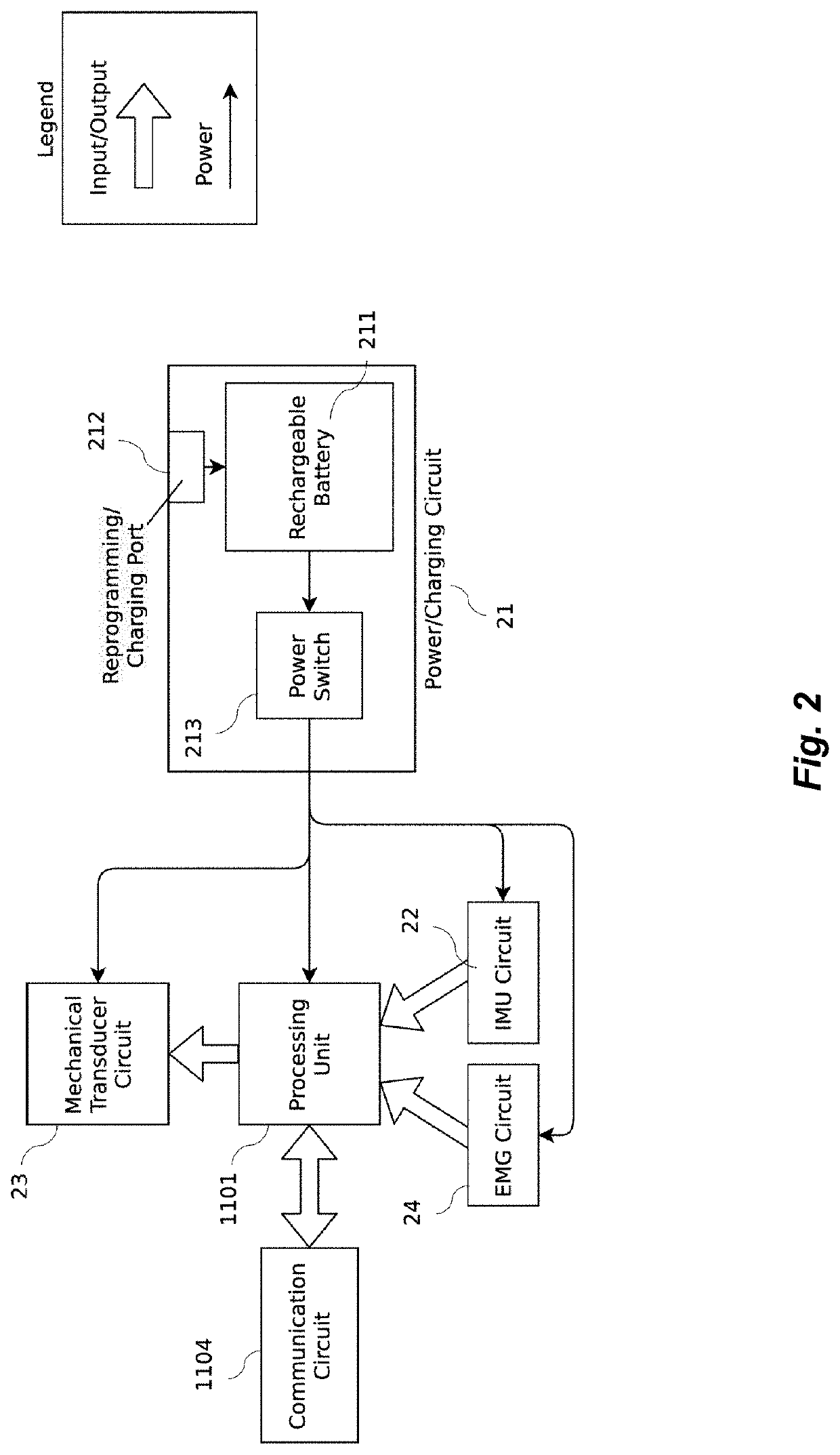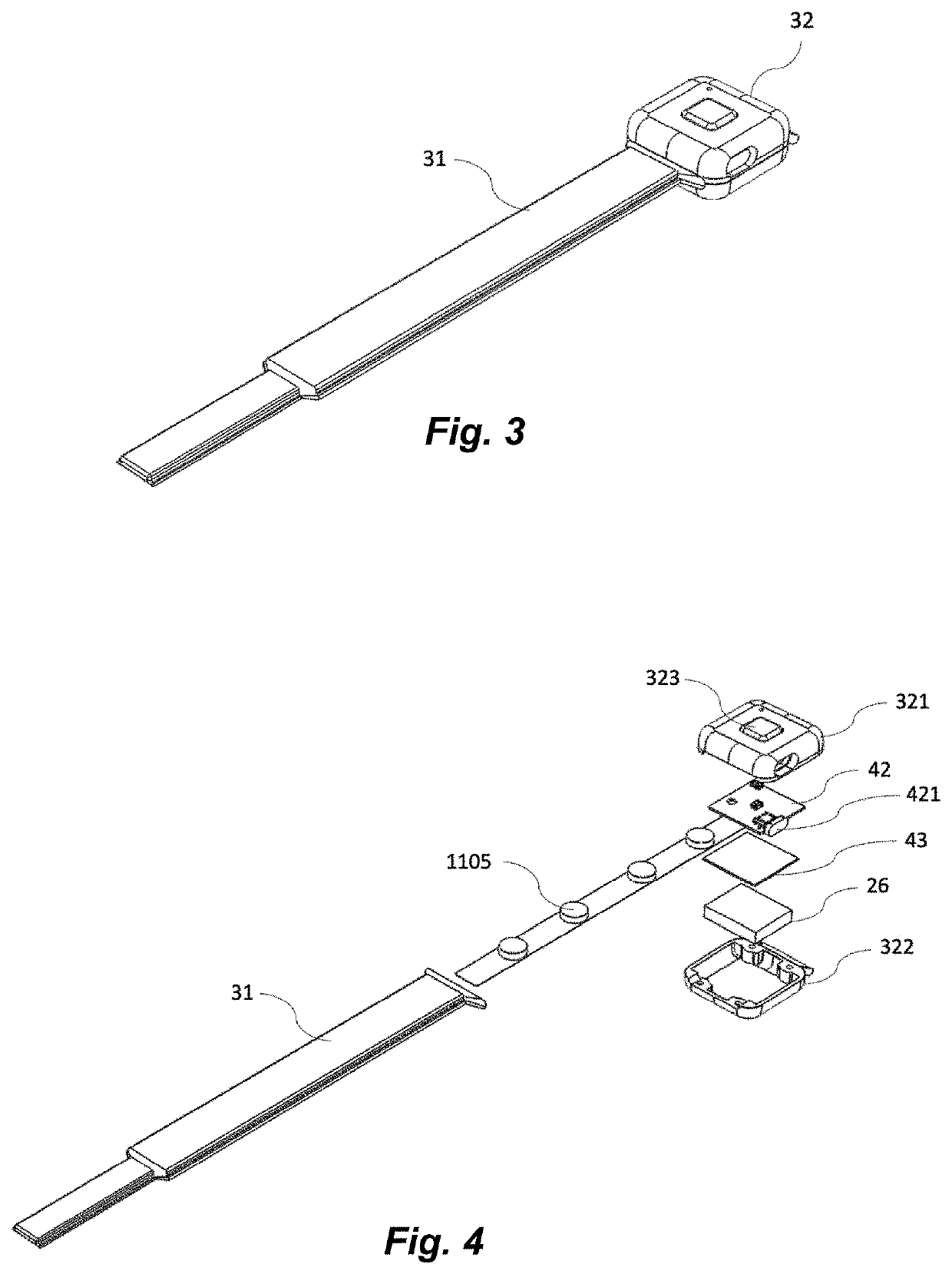Apparatus and Method for Reduction of Neurological Movement Disorder Symptoms Using Wearable Device
a technology of wearable devices and symptoms, applied in the field of wearable medical devices, can solve the problems of affecting the patient's movement, affecting the patient's ability to cut food, tie shoes, and sign names, and achieve the effect of mitigating the set of movement disorder symptoms
- Summary
- Abstract
- Description
- Claims
- Application Information
AI Technical Summary
Benefits of technology
Problems solved by technology
Method used
Image
Examples
Embodiment Construction
[0018]In accordance with one embodiment of the invention, a wearable device is provided for modulating a set of movement disorder symptoms of a subject. The device includes a housing and an attachment system, configured to be attached to a body part of a subject. The device further includes a set of body part sensors to provide a set of sensor outputs related to movement of the body part, and a set of mechanical transducers, coupled to the attachment system, configured to provide a set of mechanical outputs to the body part. The device also includes a processing unit having (i) an input operationally coupled to sensor outputs to receive body part movement data; (ii) noise filtration processing to remove, from the body part movement data, noise unrelated to the movement disorder symptoms so as to produce a filtered movement signal; (iii) feature extraction processing of the filtered movement signal to characterize features of the filtered movement signal so as to produce a characteri...
PUM
 Login to View More
Login to View More Abstract
Description
Claims
Application Information
 Login to View More
Login to View More - R&D
- Intellectual Property
- Life Sciences
- Materials
- Tech Scout
- Unparalleled Data Quality
- Higher Quality Content
- 60% Fewer Hallucinations
Browse by: Latest US Patents, China's latest patents, Technical Efficacy Thesaurus, Application Domain, Technology Topic, Popular Technical Reports.
© 2025 PatSnap. All rights reserved.Legal|Privacy policy|Modern Slavery Act Transparency Statement|Sitemap|About US| Contact US: help@patsnap.com



